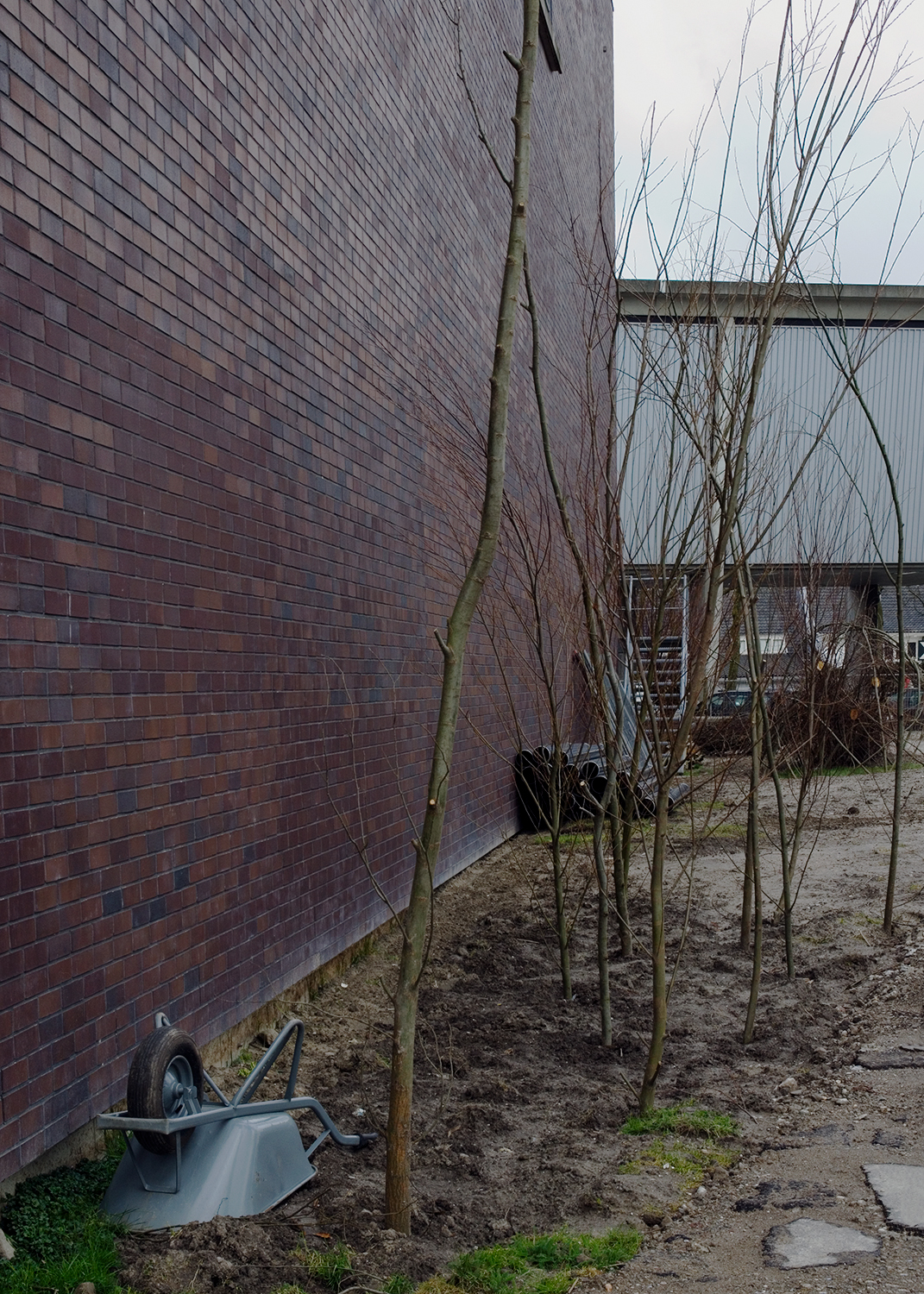The New Garden
Artist and designer Frank Bruggeman and ecological landscaper Hans Engelbrecht laid out the garden in the spring of 2015 in the grounds of the Nieuwe Instituut. The wasteland and verges are deliberately not regularly maintained, in the hope that more wild and varied growth will be achieved within the space of a few years. With the New Garden, Bruggeman and Engelbrecht have shown that greater biodiversity develops by itself when nature is allowed free rein. However, the temporary nature of the garden calls for a certain level of direction. With the help of urban debris and sewage pipes, Bruggeman and Engelbrecht have created not only the image of an urbanised landscape but also the conditions for a dynamic natural development, resulting in an ecologically valuable, partially wild assortment of plants, many of which are not normally found in the city. Pictures taken during the construction of the garden, and shortly after. The last photo is from 2021.
Artist and designer Frank Bruggeman and ecological landscaper Hans Engelbrecht laid out the garden in the spring of 2015 in the grounds of the Nieuwe Instituut. The wasteland and verges are deliberately not regularly maintained, in the hope that more wild and varied growth will be achieved within the space of a few years. With the New Garden, Bruggeman and Engelbrecht have shown that greater biodiversity develops by itself when nature is allowed free rein. However, the temporary nature of the garden calls for a certain level of direction. With the help of urban debris and sewage pipes, Bruggeman and Engelbrecht have created not only the image of an urbanised landscape but also the conditions for a dynamic natural development, resulting in an ecologically valuable, partially wild assortment of plants, many of which are not normally found in the city. Pictures taken during the construction of the garden, and shortly after. The last photo is from 2021.
















